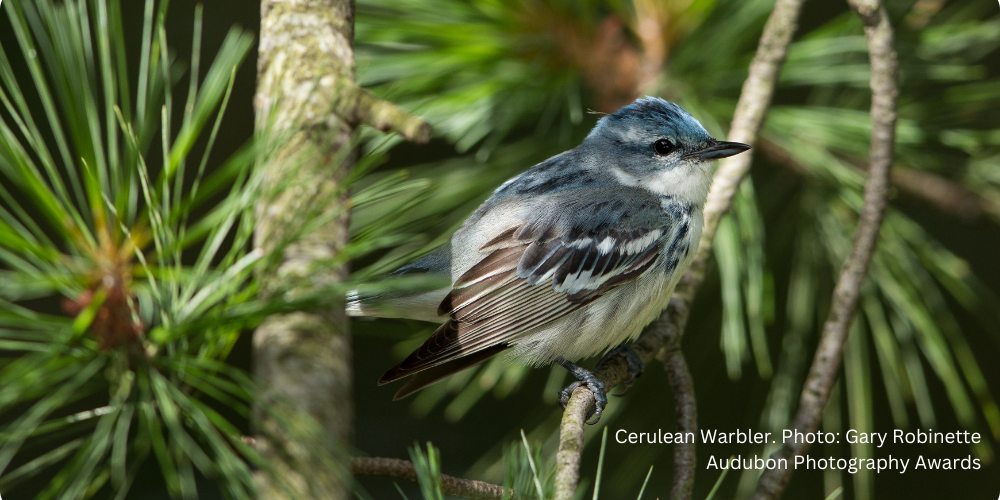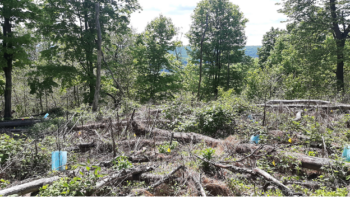
The Kittatinny Ridge Conservation Landscape is a critical habitat for migrating birds such as the golden-winged and cerulean warblers. At Audubon, we take a hemispheric, full life-cycle perspective, meaning that we don’t just focus on breeding habitat but also the migration corridors our neo-tropical migrant birds use here in Pennsylvania. To date, we have coordinated the implementation of 100 acres of cerulean warbler habitat within the Kittatinny Ridge Global IBA.
Audubon continues to partner with The Nature Conservancy to advance migratory stopover habitat projects at Cove Mountain. In 2021, an initial small gap was planted with a diverse array of fruit-bearing shrubs to provide a structurally complex habitat for spring and fall migration.

Spraying for invasive species and planting with fruiting shrubs, the ridgeline canopy opening has become an active migratory stopover site for many migratory passerines.
We have been able to go beyond initial plantings to monitoring and ongoing management of our habitat site. We are tracking the avian response to our management by contracting with local Penn State professor Dr. Julian Avery to conduct surveys during the spring and fall migratory windows. These migration surveys have indicated a higher migrant diversity in the project site relative to nearby, unimproved locations within the preserve. Several species were found only in the treatment site, including Wilson’s warbler, red-headed woodpecker, and bay-breasted warbler. These preliminary results illustrate the project’s success in providing the fuel that birds need to migrate and reduce the loss of birds that rely on Eastern Forests. These openings also support a more diverse breeding bird community relative to the surrounding forest. These data will be key to understanding how projects like Cove Mountain’s flagship migratory stopover site provide habitat.
This past fall, we expanded Cove Mountain’s migratory benefits through an additional four-acre patch that received direct seeding of fruit-bearing species. This new stopover site is only a short walk from the first habitat patches, allowing Cove Mountain hikers to experience a variety of management scenarios and forest habitat types while visiting the site.